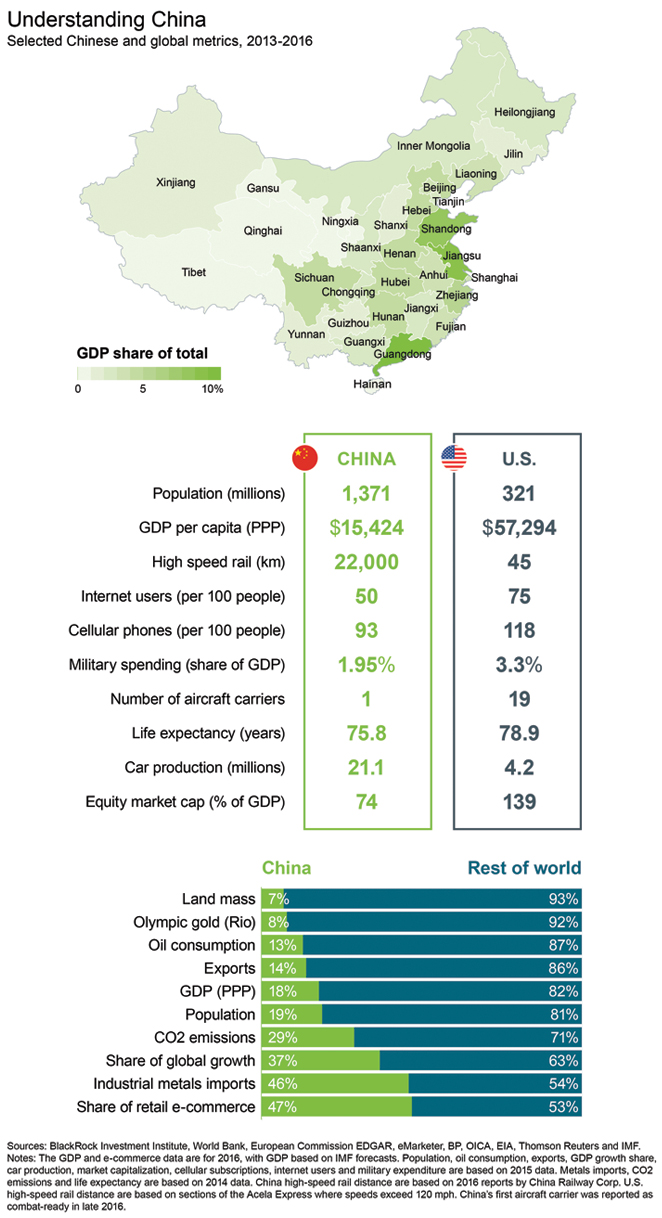Written by Isabelle Mateos y Lago
China’s debt-driven growth model is starting to reach its limits yet the country is also transitioning into a high-tech, more consumer-driven economy. How this economic evolution plays out will have major ramifications for the global economy…
The map and statistics below put China in context, showing just how important it has become for the global economy.

Economic trends, development and policy vary greatly by region, as evident in our new interactive map graphic comparing just a few economic and demographic metrics across provinces. Awareness of this heterogeneity is important to fully grasp the sheer scale of China’s development transformation.
Data from the International Monetary Fund (IMF) show that China accounted for a quarter of world gross domestic product (GDP) growth over the past 20 years, yet its share of world GDP is smaller than it was two centuries ago, according to the academic Maddison Project.
China’s hunger for global commodities and major pollution problems are well known. But the heft of China’s digital economy is less familiar: E-commerce revenues now make up nearly 50% of the world total, while mobile payments were 50 times those in the U.S. at $5.5 trillion (38 trillion yuan) in 2016, according to China’s iResearch and Forrester Research.
We believe China is taking appropriate steps to become a more services-driven, consumption-based economy. Achieving a smooth handoff to households and consumers from an industrial-led growth model is never easy. There is a reason why Japan, South Korea and Taiwan are rare examples of economies that avoided the so-called middle-income trap and successfully made the transition to become wealthy and services-oriented. The falloff in investment has caused Chinese growth to slow and means that consumption holds the key to overall growth going forward.
Greater urbanization is one of China’s top growth goals, with the aim that nearly 70% of its 1.37 billion population live in urban areas by 2030, compared with 52% in 2010, according to a 2014 World Bank report. This ongoing urbanization should feature vital reforms:












Leave A Comment